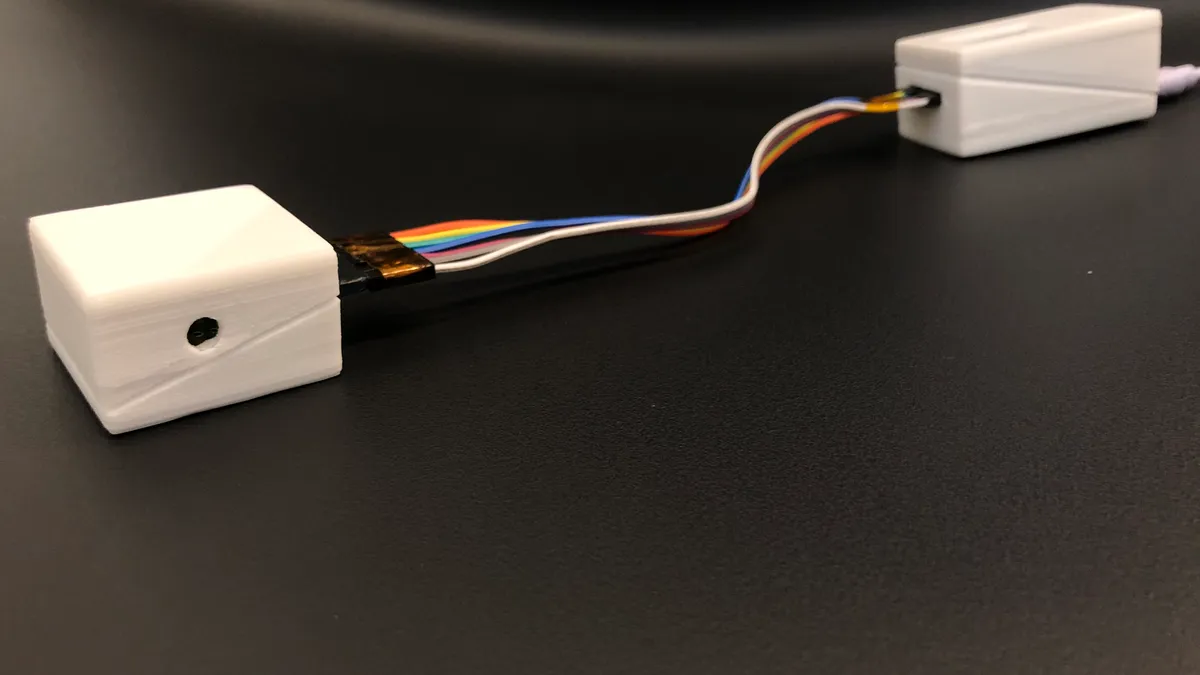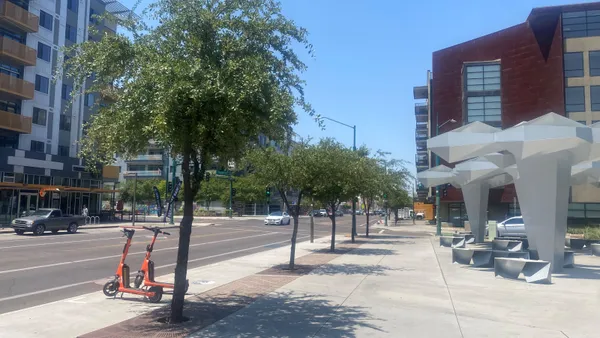Dive Brief:
- Researchers at Sweden's Chalmers University of Technology have developed an optical nano-sensor that detects low concentrations of air pollution and is small enough to be mounted on a streetlight, according to a release from the university.
- The device measures nitrogen dioxide pollution, which largely comes from automobile traffic or industrial activity. Breathing nitrogen dioxide can cause heart and lung problems, and contributes to other forms of pollution like ground-level ozone.
- Researcher Irem Tanyeli, who has been working on the sensor, said the hope is to integrate it "into other urban infrastructure, like traffic lights or speed cameras, or for measuring air quality indoors."
Dive Insight:
The World Health Organization (WHO) estimates that air pollution is responsible for 7 million deaths each year, worldwide. It's especially a problem in major cities, where emissions sources are concentrated.
According to the latest American Lung Association "State of the Air" report, 40% of Americans live with air pollution at unhealthy levels, with levels worsening due to climate change.
Monitoring air pollution in real time has long relied on expensive equipment. In the U.S., government-backed monitors can cost tens of thousands of dollars, which limits their deployment and can leave cities with incomplete pictures of how different neighborhoods are affected by air pollution.
Sensors like the one developed at Chalmers are poised to change that by making monitoring equipment cheaper and smaller. It will be especially useful for detecting air pollution in hard-to-monitor areas; the Chalmers sensor has been installed on the roof of a major shopping mall and will soon be placed along a major railway tunnel construction project, according to the university.
Similar devices have sprung up around the world, allowing community groups, cities and individual citizens to get a better sense of air pollution levels in their backyard. Activists have especially targeted them for environmental justice initiatives to show air quality impacts in poor or minority neighborhoods that may not have had monitors installed.
Though there is still work to be done to make sure they are reliable and calibrated correctly, companies have also started advertising them as part of a suite of Internet of Things (IoT) sensors, which can be installed throughout cities.










